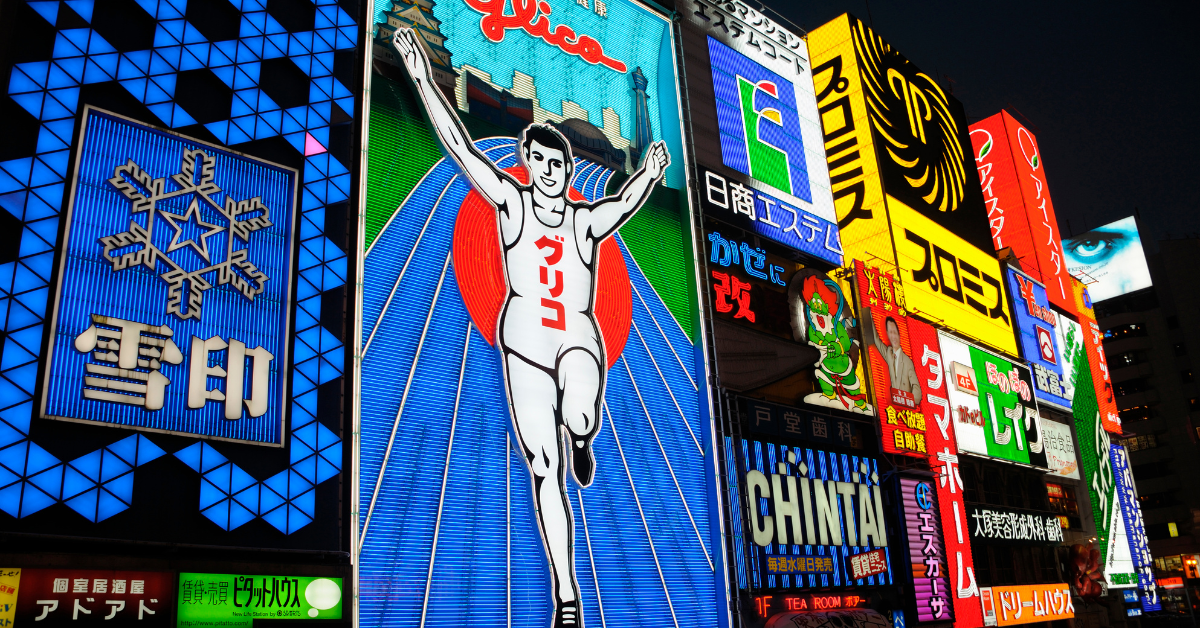Dotonbori, located in the heart of Osaka, is one of Japan’s most vibrant entertainment districts. To foreign visitors, it is famous for the Glico billboard, dazzling neon lights, and the unique food culture of Osaka. For Japanese people, however, Dotonbori is more than just a tourist attraction. It is a symbol of Osaka’s identity, a place of pride, yet also a spot that sometimes causes frustration because of the overwhelming crowds. This article explains how Japanese people truly perceive Dotonbori, offering a deeper understanding for international travelers.
What Dotonbori Means to Japanese People
Dotonbori was originally developed around a canal during the Edo period, with theaters and playhouses making it the “center of entertainment and food” in Osaka. That legacy continues today, and for Japanese people, Dotonbori is seen as a “symbol of Osaka’s identity.”
For locals, it is not part of everyday life but rather a place to take friends or guests. For people from outside Kansai, it is a must-visit destination during school trips or family vacations.
Japanese people regard Dotonbori with a mix of pride and frustration at the congestion, and its unique dual character makes it an enduring symbol of Osaka culture.
Main Impressions of Dotonbori Among Japanese People
| Perspective | Japanese Impressions |
|---|---|
| Symbolism | A place that embodies Osaka |
| Tourism | A standard destination for domestic travel and school trips |
| Everyday Life | Considered a non-daily, special place |
| Feelings | Pride coexists with frustration over crowds |
The Glico Billboard and the Neon Streetscape
The most iconic image of Dotonbori is undoubtedly the “Glico billboard.” Since its installation in 1935, it has become not just an advertisement but a cultural landmark. Tourists pose in front of it as a ritual, and for Japanese people, it has become “proof that you have been to Osaka.”
At night, the canal-side comes alive with neon lights, creating a “stage full of energy.” This scenery has been broadcast in countless TV shows and films, cementing the idea that “Osaka equals Dotonbori” nationwide.
Charm of the Neon District
| Feature | Japanese Perspective | Foreign Perspective |
|---|---|---|
| Glico Billboard | Symbol of Osaka | Essential photo spot |
| Neon Lights | Seen as lively and energetic | Feels like Japan’s energy |
| Riverside Atmosphere | Special place for dates and sightseeing | Exotic cultural experience |
Dotonbori as a Food Capital
Dotonbori is widely known as the “city of kuidaore” and serves as a hub of culinary culture. For Japanese, it is a place to enjoy indulgent meals during trips, and for foreign visitors, it is where they can “taste Osaka in a short time.”
Famous Dishes of Dotonbori
| Dish | Features |
|---|---|
| Takoyaki | Crispy outside, gooey inside. Loved by both locals and tourists |
| Okonomiyaki | A shared dish cooked on an iron griddle, representing Osaka’s casual food |
| Kushikatsu | The “no double-dipping” sauce rule fascinates visitors |
| Crab Dishes | Giant moving crab sign, popular with tourists |
Here, food itself becomes the goal of travel. Dotonbori’s role as a food capital makes it invaluable to both locals and visitors.
Japanese People’s Mixed Feelings
While Japanese people feel proud of Dotonbori, they are also often overwhelmed by the crowds and noise. On weekends and holidays, the area becomes so congested that it can be difficult to walk. For many locals, Dotonbori is not part of daily life but rather a “space for tourists to enjoy.”
Still, the liveliness is part of Osaka’s charm, and seeing tourists enjoying themselves makes locals feel proud. Thus, for Japanese people, Dotonbori is “a place of both pride and inconvenience.”
Emotional Duality of Japanese People
| Positive Feelings | Negative Feelings |
|---|---|
| Pride in representing Osaka | Frustration with overwhelming crowds |
| Symbol of food culture | Difficult to walk when packed |
| Satisfaction that it is popular internationally | Feeling it has become too commercialized |
Different Perspectives: Locals vs. Tourists
For locals, Dotonbori is not a place for daily shopping or meals but one to show visitors around. In contrast, for tourists, it is “a must-see attraction” where they can take photos, enjoy food stalls, and experience Osaka’s vibrancy.
Differences in Perception
| Perspective | Locals | Tourists |
|---|---|---|
| Frequency | Rarely visit in daily life | Must-visit during Osaka trips |
| Feelings | Pride mixed with fatigue | Fresh and exciting |
| Main Purpose | Eating out, guiding guests | Photography and food-hopping |
Dotonbori’s Appeal to Foreign Visitors
For foreign visitors, Dotonbori is a place to “feel Japan’s energy in one spot.” The neon lights create a cinematic atmosphere, and even during short stays, the area leaves a lasting impression.
It is particularly popular among Asian tourists, who share photos on social media after visiting. Japanese people, in turn, feel proud seeing their culture appreciated worldwide. Thus, Dotonbori is valued as “a place that both Japanese and foreigners enjoy from different angles.”
Historical Background and Cultural Value
Dotonbori developed as a canal and entertainment hub during the Edo period. Theaters, movie houses, and eateries gradually merged, making it a “district of both entertainment and food.”
Because of this history, Dotonbori is more than just a commercial area—it is regarded as “a place that embodies Osaka’s culture.” Understanding its background allows foreign visitors to appreciate its deeper significance.
Conclusion
For Japanese people, Dotonbori is the “symbol of Osaka” and a proud representation of its food culture and lively atmosphere. While they may sometimes feel frustrated by the heavy crowds, they still cherish its role as the “face of Osaka.” For foreigners, it is “a condensed experience of Japan’s vibrancy” and a destination of lasting appeal.
Dotonbori will continue to hold meaning for both locals and visitors, each valuing it in their own way.






